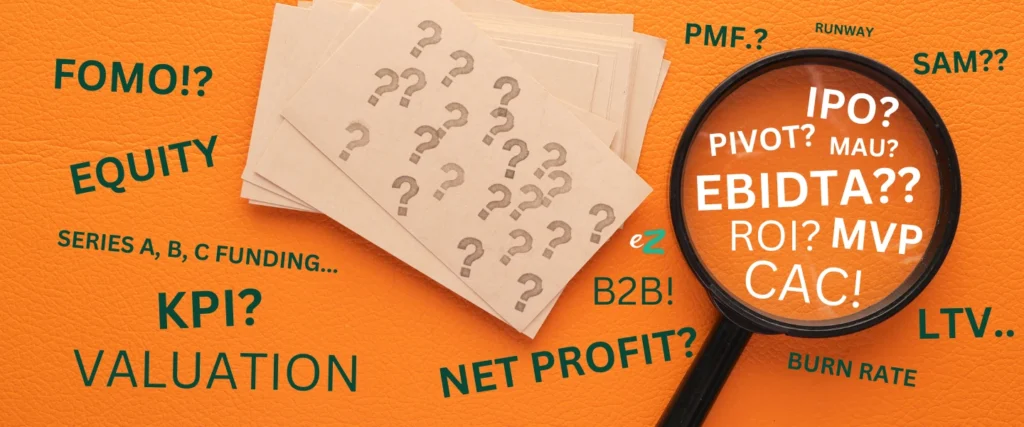Starting a business or diving into entrepreneurship can feel overwhelming, especially when you’re bombarded with jargon like FOMO, EBITDA, PMF, MAU, and more. But don’t worry—we’ve got you covered! This ultimate list breaks down essential startup and business terms in a easy way. Whether you’re a seasoned entrepreneur or just starting out, this guide will help you navigate the business world like a pro.
Business Terms every Entrepreneur should Understand
We’ve have curated a list of most essential startup terms or business terms which every business man or entrepreneur should know so that you never get blank whenever these terms come out in front of you.
1. FOMO (Fear of Missing Out)

What it is : FOMO is the fear of missing out on a great opportunity, trend, or deal. In business, it’s often used in marketing to create urgency.
Why it matters : FOMO drives customer action, like signing up for limited-time offers or exclusive deals.
Example : Don’t miss out on our early-bird discount—it ends tomorrow! or If you’re feeling inspired to dive into entrepreneurship, don’t let the fear of missing out hold you back, especially with the startup ecosystem in India thriving like never before. Seize the opportunity and turn your ideas into reality!m.
2. EBITDA (Earnings Before Interest, Taxes, Depreciation, and Amortization)
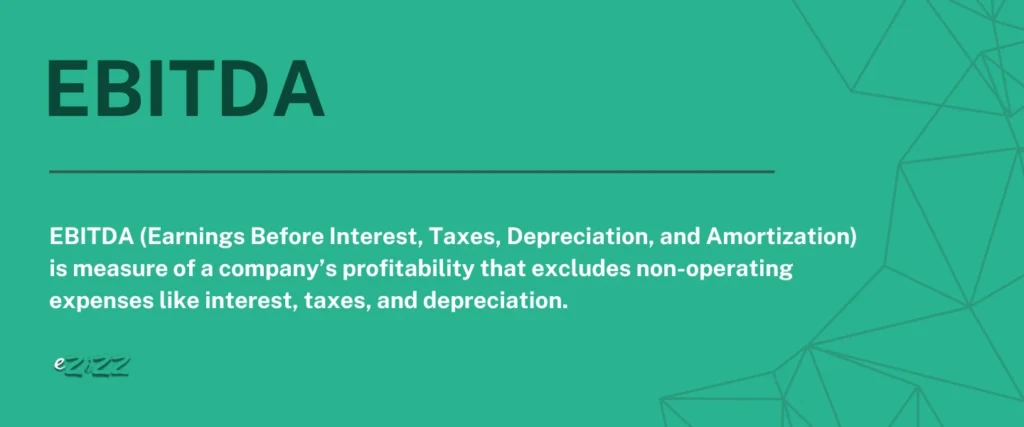
What it is : EBITDA is measure of a company’s profitability that excludes non-operating expenses like interest, taxes, and depreciation.
Why it matters : It helps investors and stakeholders understand a company’s core operating performance.
Example : Our EBITDA for Q3 was $1.2 million, showing strong operational growth.
3. PMF (Product Market Fit)

What it is: When a product satisfies a strong market demand.
Why it matters: Achieving PMF is critical for scaling a startup successfully.
Example: After months of iteration, we finally achieved PMF with our app.
4. MAU (Monthly Active Users)

What it is: MAU is the number of unique users who engage with a product or service in a month.
Why it matters: It’s a key metric for measuring user engagement and growth.
Example: Our MAU grew by 20% last quarter, reaching 500,000 users.
5. Runway
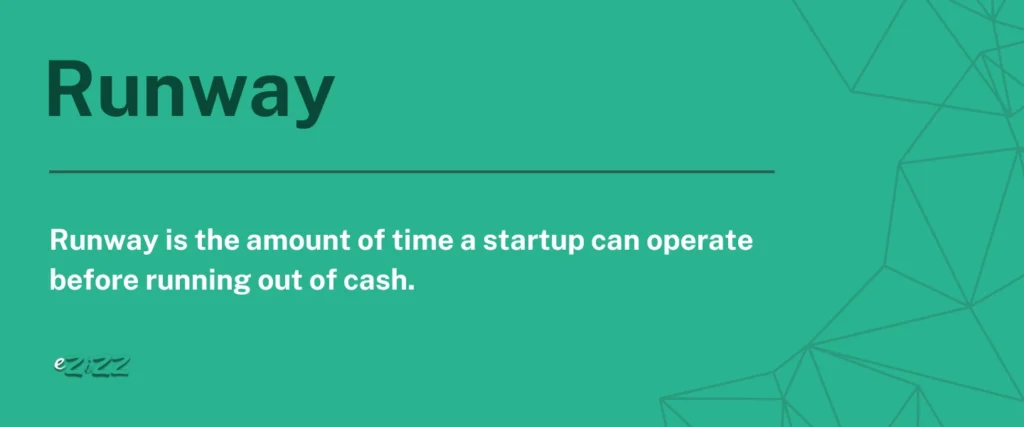
What it is: Runway is the amount of time a startup can operate before running out of cash.
Why it matters: It helps founders plan fundraising and expenses.
Example: With our current burn rate, we have a 12-month runway.
6. Burn Rate

What it is: Burn Rate is the rate at which a company spends money, typically measured monthly.
Why it matters: It indicates how quickly a startup is using its cash reserves.
Example: Our burn rate is $50,000 per month, so we need to raise funds soon.
7. Churn Rate

What it is: Churn Rate is the percentage of customers who stop using a product or service over a given period.
Why it matters: High churn rates can indicate issues with customer satisfaction or product fit.
Example: Our churn rate dropped to 5% after improving customer support.
8. ARPU (Average Revenue Per User)
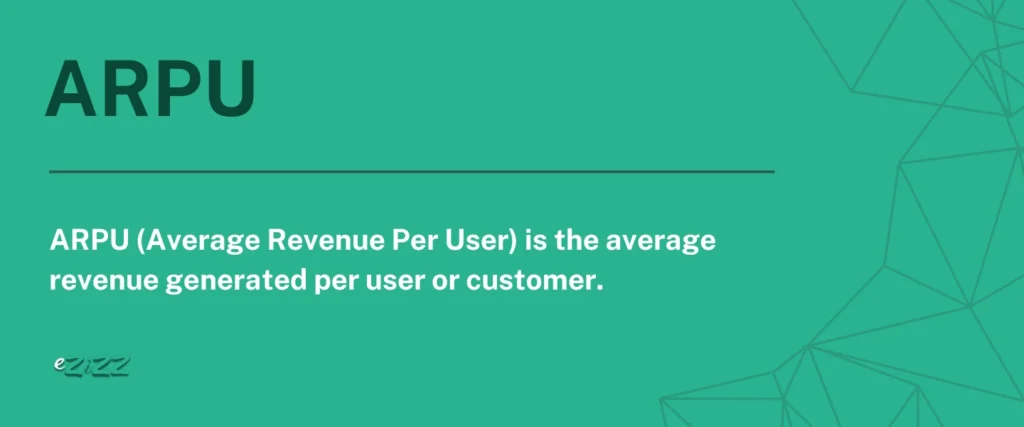
What it is: ARPU is the average revenue generated per user or customer.
Why it matters: It helps measure the profitability of each customer.
Example: Our ARPU increased to $15 after introducing premium features.
9. CAC (Customer Acquisition Cost)
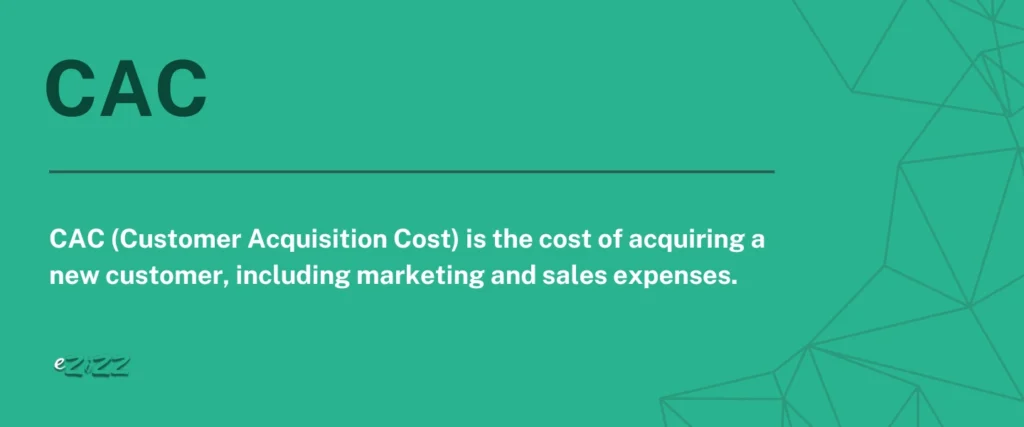
What it is: CAC is the cost of acquiring a new customer, including marketing and sales expenses.
Why it matters: It’s crucial for understanding the efficiency of your marketing efforts.
Example: Our CAC is 100, but our LTV is 500, making it a profitable model.
10. LTV (Lifetime Value)
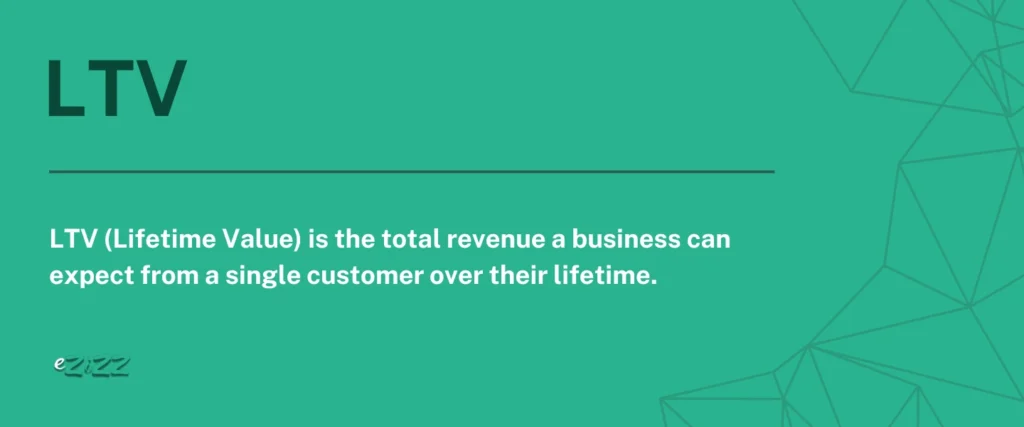
What it is: LTV is the total revenue a business can expect from a single customer over their lifetime. LTV should be at least 3x CAC for a profitable business. LTV should always be higher than CAC for a sustainable business.
Why it matters: It helps determine how much to spend on acquiring and retaining customers.
Example: Our LTV is 100, so we can afford up to 30 on CAC (keeping a healthy profit margin).
11. Bootstrapping
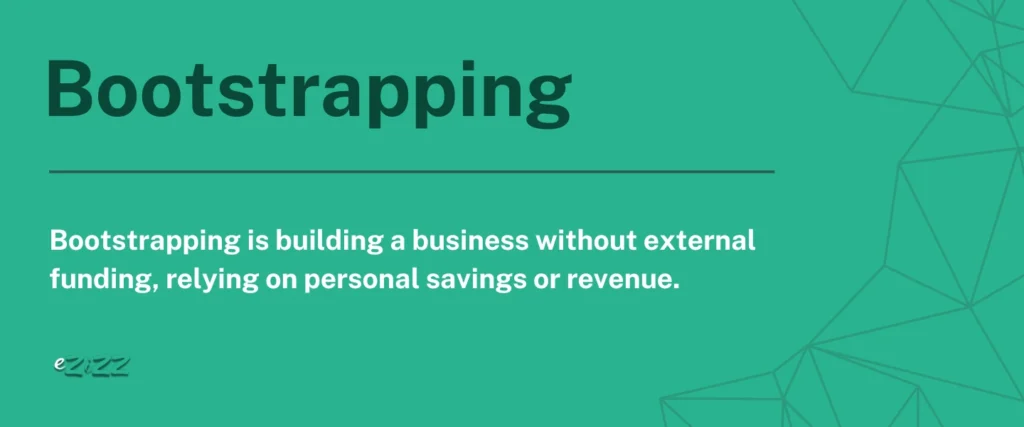
What it is: Bootstrapping is building a business without external funding, relying on personal savings or revenue.
Why it matters: It allows founders to retain full control of their company.
Example: We bootstrapped for the first two years before seeking investors.
12. Valuation

What it is: Valuation is the estimated worth of a company, often determined during fundraising.
Why it matters: It influences how much equity you give up to investors.
Example: Our startup was valued at $10 million during the seed round.
13. Equity

What it is: Equity is the ownership in a company and it’s represented by shares.
Why it matters: It determines how much of the company you own or give away.
Example: We offered 10% equity to our angel investor.
14. Angel Investor
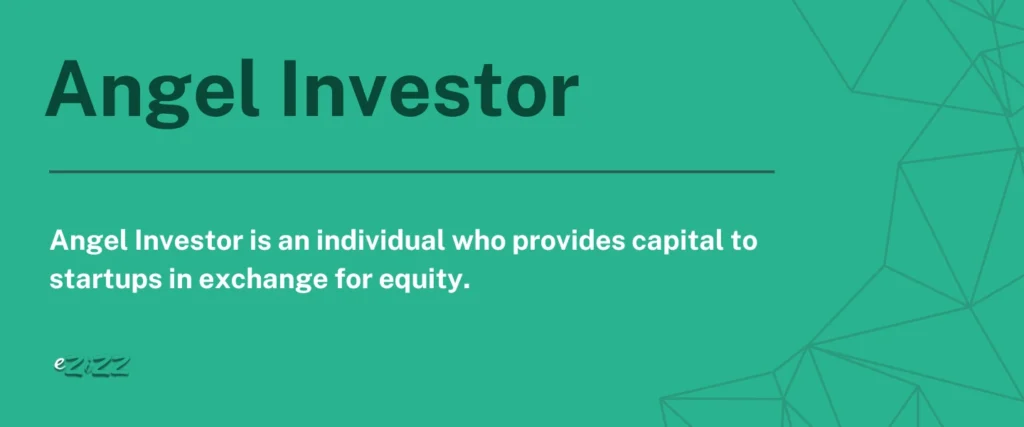
What it is: An individual who provides capital to startups in exchange for equity.
Why it matters: Angel Investor provide early-stage funding and mentorship.
Example: Our angel investor helped us secure $100,000 in seed funding.
15. VC (Venture Capital)
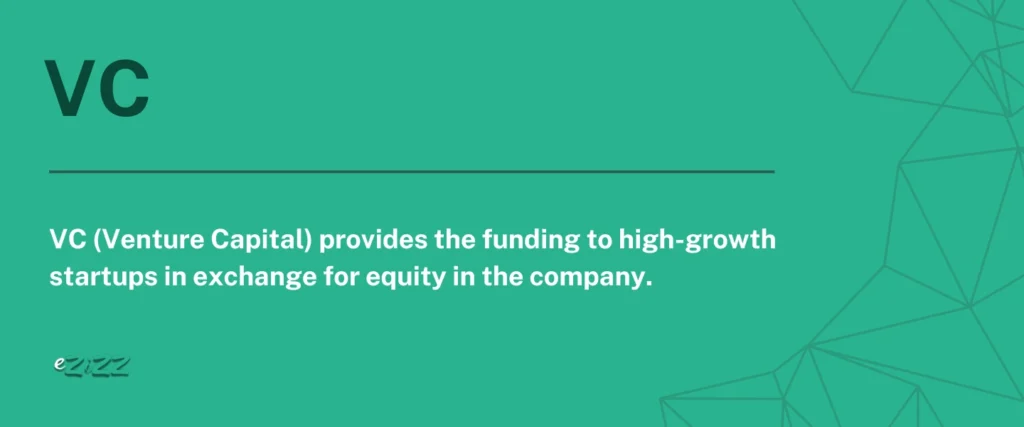
What it is: VC (Venture Capital) provides the funding to high-growth startups in exchange for equity in the company.
Why it matters: It’s a major source of funding for scaling businesses.
Example: We raised $2 million in VC funding to expand our team.
16. Series A, B, C Funding
Series A Funding

What it is: Startups have a product and some users. They need money to grow.
Why it matters: Helps startups prove their business can grow and succeed.
Example: A food delivery app wants to expand to more cities.
Series B Funding

What it is: The startup is growing fast and needs money to reach more customers.
Why it matters: Helps businesses expand operations and compete better.
Example: The food app adds more restaurants and improves delivery speed.
Series C Funding

What it is: Series C Funding, The company is successful and wants to expand globally, buy other businesses, or go public.
Why it matters: Prepares the company for massive growth or going public (IPO).
Example: The food app expands worldwide and starts grocery delivery.
17. Pivot

What it is: Pivot is a significant change in a startup’s business model or product direction.
Why it matters: It helps startups adapt to market needs.
Example: We pivoted from a B2C to a B2B model after realising the market potential.
18. MVP (Minimum Viable Product)
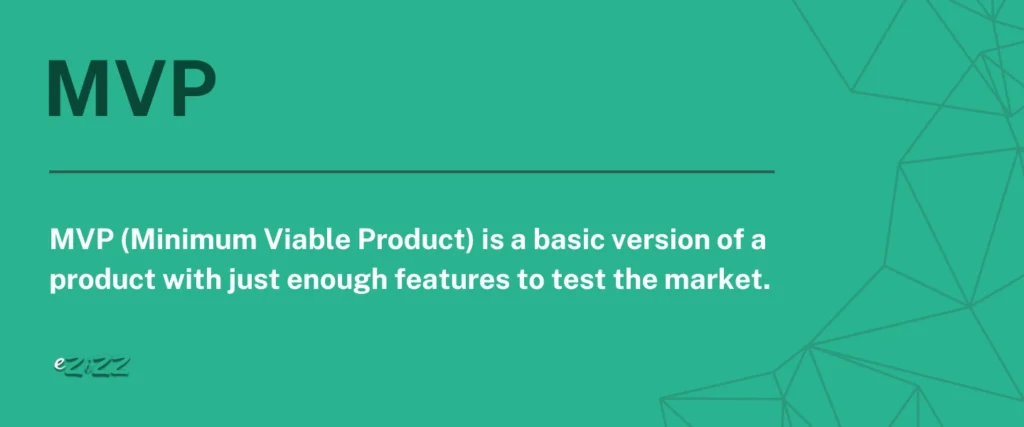
What it is: MVP (Minimum Viable Product) is a basic version of a product with just enough features to test the market.
Why it matters: It helps validate ideas without heavy investment.
Example: We launched an MVP to gather user feedback before building the full product.
19. KPI (Key Performance Indicator)
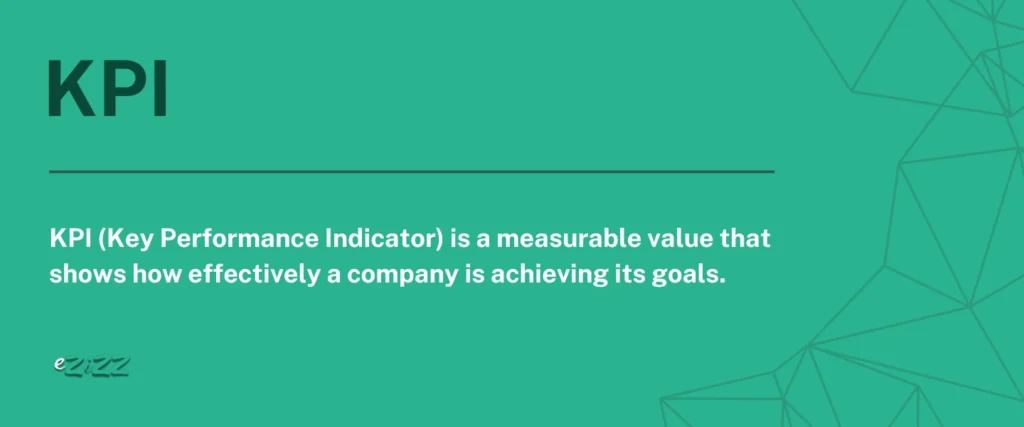
What it is: KPI (Key Performance Indicator) is a measurable value that shows how effectively a company is achieving its goals.
Why it matters: It helps track progress and performance.
Example: Our primary KPI is monthly revenue growth.
20. ROI (Return on Investment)
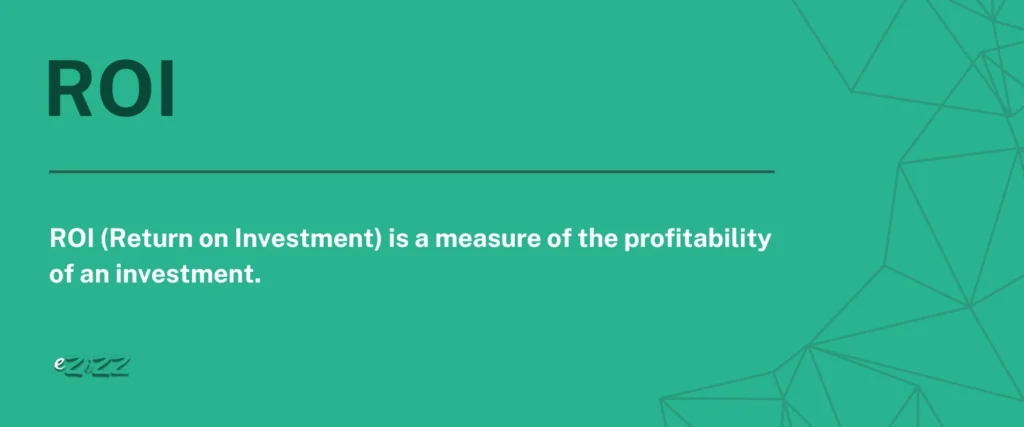
What it is: ROI (Return on Investment) is a measure of the profitability of an investment.
Why it matters: It helps assess the success of business initiatives.
Example: Our marketing campaign had an ROI of 300%.
21. Scalability
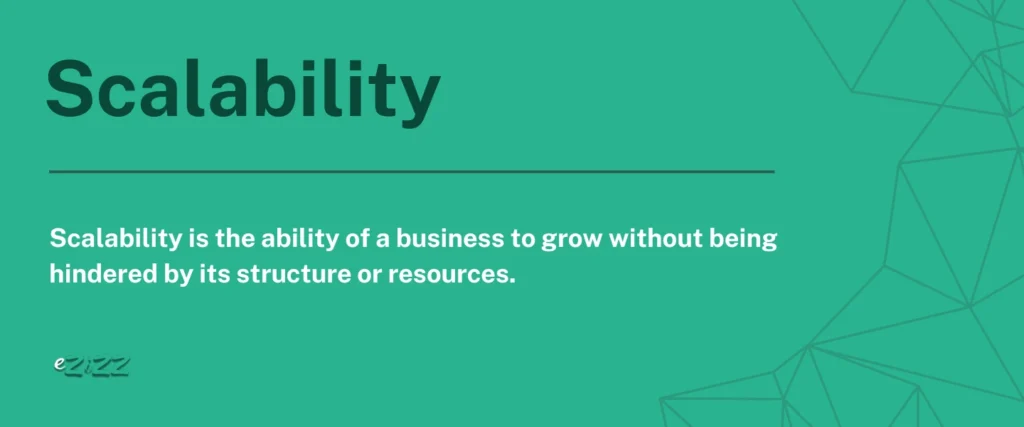
What it is: Scalability is the ability of a business to grow without being hindered by its structure or resources.
Why it matters: It’s essential for long-term success.
Example: Our cloud-based platform is highly scalable.
22. Disruption

What it is: Introducing a product or service that significantly changes an industry.
Why it matters: Disruptive businesses often capture large market shares.
Example: Uber disrupted the traditional taxi industry.
23. Incubator

What it is: A program that supports early-stage startups with resources and mentorship.
Why it matters: It helps startups grow and succeed.
Example: We joined an incubator to access office space and mentorship.
24. Accelerator

What it is: A program that helps startups grow quickly through funding and mentorship.
Why it matters: It’s ideal for startups ready to scale.
Example: We graduated from Y Combinator, a top accelerator.
25. Exit Strategy

What it is: A plan for how a founder or investor will exit a business, often through a sale or IPO.
Why it matters: It ensures a return on investment.
Example: Our exit strategy is to sell the company to a larger tech firm.
26. IPO (Initial Public Offering)
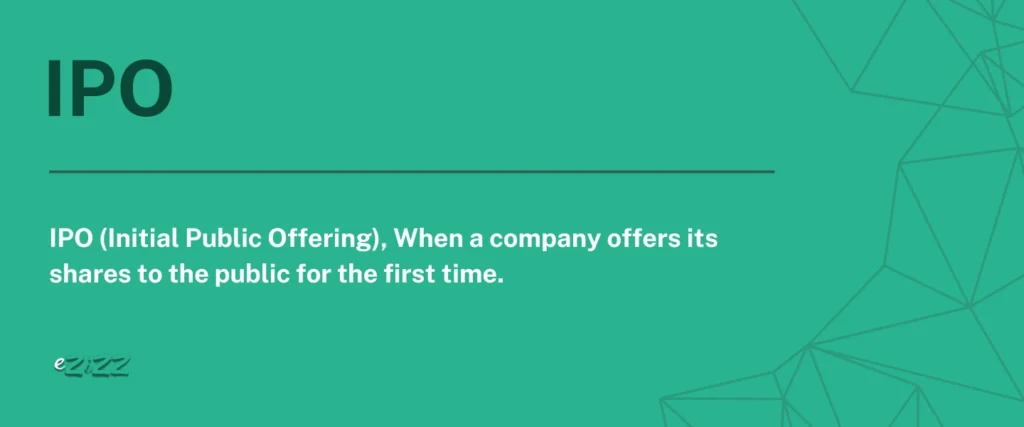
What it is: IPO (Initial Public Offering), When a company offers its shares to the public for the first time.
Why it matters: It’s a way to raise significant capital.
Example: Facebook’s IPO in 2012 raised $16 billion.
27. Cap Table (Capitalization Table)

What it is: Cap Table (Capitalization Table), A table showing the equity ownership of a company.
Why it matters: It helps track ownership and dilution.
Example: Our cap table shows that founders own 60% of the company.
28. Dilution
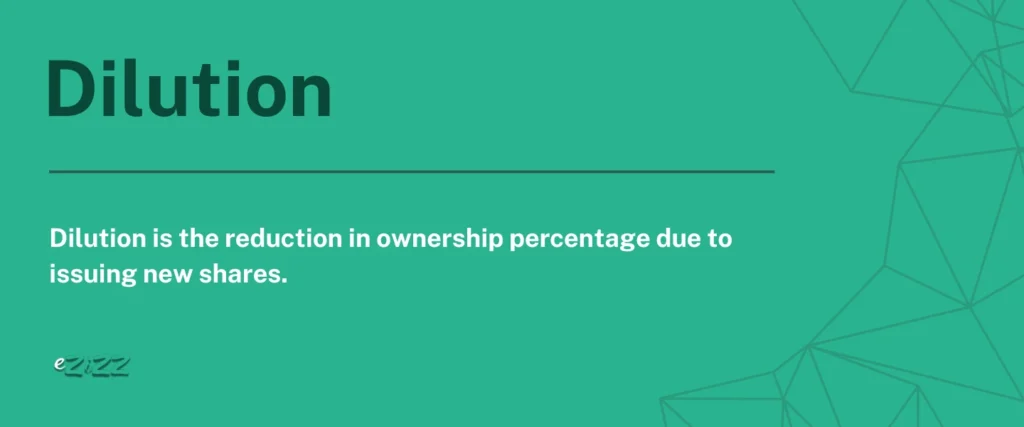
What it is: Dilution is the reduction in ownership percentage due to issuing new shares.
Why it matters: It affects control and equity value.
Example: After the funding round, our ownership was diluted by 10%.
29. Term Sheet

What it is: A non-binding agreement outlining the terms of an investment.
Why it matters: It sets the foundation for negotiations.
Example: We signed a term sheet with the VC firm.
30. Convertible Note

What it is: A short-term debt that converts into equity during a future funding round.
Why it matters: It’s a common way to raise early-stage funding.
Example: We raised $500,000 through a convertible note.
31. SAFE (Simple Agreement for Future Equity)
What it is: An agreement that gives investors the right to equity in a future round.
Why it matters: It simplifies early-stage fundraising.
Example: We used a SAFE to raise $200,000 from angel investors.
32. Run Rate
What it is: An estimate of a company’s financial performance over a year, based on current data.
Why it matters: It helps predict future revenue or expenses.
Example: Our run rate suggests $1.2 million in annual revenue.
33. Gross Margin
What it is: The percentage of revenue remaining after deducting the cost of goods sold (COGS).
Why it matters: It indicates profitability.
Example: Our gross margin is 70%, showing strong profitability.
34. Net Profit
What it is: The total revenue minus all expenses, including taxes and interest.
Why it matters: It shows the actual profit a company makes.
Example: Our net profit for the year was $500,000.
35. Cash Flow
What it is: The movement of money in and out of a business.
Why it matters: Positive cash flow is essential for survival.
Example: We improved cash flow by reducing expenses.
36. Break-Even Point
What it is: The point at which revenue equals expenses, resulting in no profit or loss.
Why it matters: It’s a key milestone for startups.
Example: We reached break-even after 18 months.
37. TAM (Total Addressable Market)
What it is: The total market demand for a product or service.
Why it matters: It helps assess growth potential.
Example: Our TAM is $10 billion, showing huge potential.
38. SAM (Serviceable Addressable Market)
What it is: The portion of TAM that a company can realistically target.
Why it matters: It provides a more focused market estimate.
Example: Our SAM is $2 billion, based on our current capabilities.
39. SOM (Serviceable Obtainable Market)
What it is: The portion of SAM that a company can capture.
Why it matters: It’s a realistic target for short-term growth.
Example: Our SOM is $500 million, which we aim to capture in 3 years.
40. Freemium Model
What it is: A pricing strategy where basic features are free, but premium features require payment.
Why it matters: It attracts users and converts them into paying customers.
Example: We use a freemium model to grow our user base.
41. B2B (Business-to-Business)
What it is: A business model where companies sell to other businesses.
Why it matters: It’s a common model for SaaS and enterprise solutions.
Example: Our B2B software helps companies manage their supply chains.
42. B2C (Business-to-Consumer)
What it is: A business model where companies sell directly to consumers.
Why it matters: It’s common in retail and e-commerce.
Example: Our B2C app helps users track their fitness goals.
43. C2C (Consumer-to-Consumer)
What it is: A business model where consumers sell directly to other consumers.
Why it matters: It’s the foundation of platforms like eBay.
Example: Our C2C platform connects buyers and sellers of handmade goods.
44. SaaS (Software as a Service)
What it is: A software delivery model where applications are hosted in the cloud.
Why it matters: It’s a scalable and cost-effective way to deliver software.
Example: Our SaaS platform helps businesses manage their finances.
45. PaaS (Platform as a Service)
What it is: A cloud-based platform for developing and deploying applications.
Why it matters: It simplifies app development for businesses.
Example: We use PaaS to build and deploy our apps quickly.
46. IaaS (Infrastructure as a Service)
What it is: A cloud-based service providing virtualized computing resources.
Why it matters: It reduces the need for physical infrastructure.
Example: We rely on IaaS for our data storage and server needs.
47. API (Application Programming Interface)
What it is: A set of rules allowing different software applications to communicate.
Why it matters: It enables integration between systems.
Example: Our API allows third-party apps to access our data.
48. UI (User Interface)
What it is: The visual part of a product that users interact with.
Why it matters: A good UI enhances user experience.
Example: We redesigned our UI to make it more intuitive.
49. UX (User Experience)
What it is: The overall experience a user has while interacting with a product.
Why it matters: A positive UX leads to higher customer satisfaction.
Example: Our UX improvements reduced customer complaints by 30%.
50. CRM (Customer Relationship Management)
What it is: Software used to manage interactions with customers.
Why it matters: It helps improve customer retention and sales.
Example: We use a CRM to track customer interactions and sales.
51. ERP (Enterprise Resource Planning)
What it is: Software that integrates and manages core business processes.
Why it matters: It streamlines operations and improves efficiency.
Example: Our ERP system handles inventory, finance, and HR.
52. SEO (Search Engine Optimization)
What it is: The process of improving a website’s visibility on search engines.
Why it matters: It drives organic traffic and reduces customer acquisition costs.
Example: Our SEO strategy increased website traffic by 50%.
53. SEM (Search Engine Marketing)
What it is: Paid advertising to increase visibility on search engines.
Why it matters: It drives immediate traffic and leads.
Example: Our SEM campaign generated 1,000 leads in a month.
54. CTR (Click-Through Rate)
What it is: The percentage of people who click on a link after seeing it.
Why it matters: It measures the effectiveness of ads and content.
Example: Our email campaign had a CTR of 10%.
55. CRO (Conversion Rate Optimization)
What it is: The process of increasing the percentage of users who take a desired action.
Why it matters: It improves the effectiveness of marketing efforts.
Example: Our CRO efforts increased sign-ups by 20%.
56. A/B Testing
What it is: Comparing two versions of a webpage or app to see which performs better.
Why it matters: It helps optimize user experience and conversions.
Example: We used A/B testing to determine the best landing page design.
57. Gross Profit
What it is: The profit a company makes after deducting the costs associated with producing and selling its products (COGS).
Why it matters: It shows how efficiently a company produces goods or services.
Example: Our gross profit last quarter was $200,000.
58. Net Loss
What it is: When a company’s total expenses exceed its total revenue.
Why it matters: It indicates financial health and sustainability.
Example: We reported a net loss of $50,000 in Q2.
59. Working Capital
What it is: The difference between a company’s current assets and current liabilities.
Why it matters: It measures short-term financial health and liquidity.
Example: Our working capital is $300,000, ensuring we can cover short-term expenses.
60. Debt-to-Equity Ratio
What it is: A measure of a company’s financial leverage, calculated by dividing total liabilities by shareholder equity.
Why it matters: It helps assess a company’s financial stability.
Example: Our debt-to-equity ratio is 0.5, indicating low financial risk.
61. Cash Conversion Cycle (CCC)
What it is: The time it takes for a company to convert its investments in inventory into cash flow from sales.
Why it matters: It measures efficiency in managing inventory and receivables.
Example: Our CCC is 45 days, showing efficient cash flow management.
62. Market Penetration
What it is: The percentage of a target market that uses a company’s product or service.
Why it matters: It helps assess market share and growth potential.
Example: Our market penetration is 15%, leaving room for growth.
63. Blue Ocean Strategy
What it is: A strategy focused on creating new market spaces (blue oceans) rather than competing in existing ones (red oceans).
Why it matters: It helps businesses avoid intense competition.
Example: We adopted a blue ocean strategy by targeting an underserved niche.
64. Red Ocean Strategy
What it is: Competing in existing markets with intense competition.
Why it matters: It’s a common but challenging approach for established markets.
Example: In the red ocean of smartphones, differentiation is key.
65. SWOT Analysis
What it is: A framework for analyzing a company’s Strengths, Weaknesses, Opportunities, and Threats.
Why it matters: It helps in strategic planning and decision-making.
Example: Our SWOT analysis revealed opportunities in international markets.
66. PEST Analysis
What it is: A framework analyzing Political, Economic, Social, and Technological factors affecting a business.
Why it matters: It helps understand external market conditions.
Example: Our PEST analysis highlighted the impact of new regulations.
67. Lean Startup
What it is: A methodology focused on building businesses through rapid experimentation and validated learning.
Why it matters: It reduces waste and increases efficiency.
Example: We used the lean startup approach to test our MVP quickly.
68. Agile Methodology
What it is: A project management approach emphasizing iterative development and collaboration.
Why it matters: It improves flexibility and responsiveness to change.
Example: Our team uses agile methodology to deliver updates every two weeks.
69. Crowdfunding
What it is: Crowd Funding is raising small amounts of money from a large number of people, often via platforms like Kickstarter.
Why it matters: It’s an alternative way to fund startups.
Example: We raised $100,000 through crowdfunding for our new product.
70. Vesting Schedule
What it is: A timeline determining when employees or founders earn full ownership of their equity.
Why it matters: It ensures long-term commitment.
Example: Our vesting schedule is four years with a one-year cliff.
71. Cliff Vesting
What it is: A period (usually one year) before any equity is vested.
Why it matters: It protects the company from early departures.
Example: No equity is vested until the one-year cliff is reached.
72. Non-Disclosure Agreement (NDA)
What it is: A legal contract protecting confidential information shared between parties.
Why it matters: It safeguards intellectual property.
Example: We signed an NDA before discussing our product with investors.
73. Intellectual Property (IP)
What it is: Creations of the mind, such as inventions, designs, or trademarks, that are legally protected.
Why it matters: It protects a company’s innovations.
Example: We filed a patent to protect our IP.
74. Trademark
What it is: A symbol, word, or phrase legally registered to represent a company or product.
Why it matters: It protects brand identity.
Example: Our logo is a registered trademark.
75. Patent
What it is: A legal right granting exclusive use of an invention for a set period.
Why it matters: It prevents others from copying your innovation.
Example: We secured a patent for our new technology so no one can copy our technology now.
76. Copyright
What it is: Copyright is known for the legal protection for original works of authorship, such as books, music, or software.
Why it matters: It prevents unauthorized use of creative works.
Example: Our software code is protected by copyright.
77. Due Diligence
What it is: The process of investigating a business before making an investment or acquisition.
Why it matters: It ensures informed decision-making.
Example: The investors conducted due diligence before funding us.
78. Merger
What it is: Merger is Combining two companies into one entity.
Why it matters: It can create synergies and increase market share.
Example: Our merger with XYZ Corp expanded our product line.
79. Acquisition
What it is: Acquisition is one company purchasing another.
Why it matters: It allows for rapid growth and market entry.
Example: We acquired a smaller competitor to expand our customer base.
80. Synergy
What it is: The combined value created when two companies merge or collaborate.
Why it matters: It justifies mergers and acquisitions.
Example: The synergy between our teams increased productivity by 20%.

